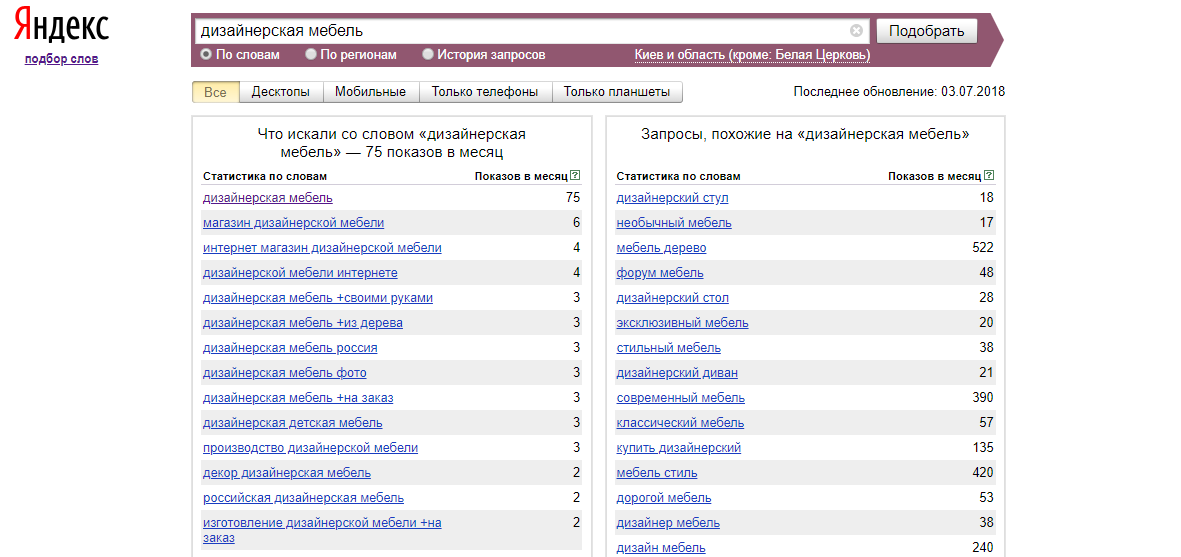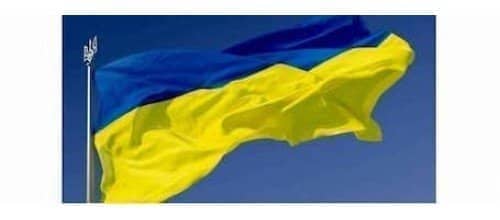- 1
- 2
- 3
- 4
- 5
- 6
- 7
- 8
- 9
- 10
- 11
- 12
- 13
- 14
- 15
- 16
- 17
- 18
- 19
- 20
- 21
- 22
- 23
- 24
- 25
- 26
- 27
- 28
- 29
- 30
- 31
- 32
- 33
- 34
- 35
- 36
- 37
- 38
- 39
- 40
- 41
- 42
- 43
- 44
- 45
- 46
- 47
- 48
- 49
- 50
- 51
- 52
- 53
- 54
- 55
- 56
- 57
- 58
- 59
- 60
- 61
- 62
- 63
- 64
- 65
- 66
- 67
- 68
- 69
- 70
- 71
- 72
- 73
- 74
- 75
- 76
- 77
- 78
- 79
- 80
- 81
- 82
- 83
- 84
- 85
- 86
- 87
- 88
- 89
- 90
- 91
- 92
- 93
- 94
- 95
- 96
- 97
- 98
- 99
- 100
- 101
- 102
- 103
- 104
- 105
- 106
- 107
- 108
- 109
- 110
- 111
- 112
- 113
- 114
- 115
- 116
- 117
- 118
- 119
- 120
- 121
- 122
- 123
- 124
- 125
- 126
- 127
- 128
- 129
- 130
- 131
- 132
- 133
- 134
- 135
- 136
- 137
- 138
- 139
- 140
- 141
- 142
- 143
- 144
- 145
- 146
- 147
- 148
- 149
- 150
- 151
- 152
- 153
- 154
- 155
- 156
- 157
- 158
- 159
- 160
- 161
- 162
- 163
- 164
- 165
- 166
- 167
- 168
- 169
- 170
- 171
- 172
- 173
- 174
- 175
- 176
- 177
- 178
- 179
- 180
- 181
- 182
- 183
- 184
- 185
- 186
- 187
- 188
- 189
- 190
- 191
- 192
- 193
- 194
- 195
- 196
- 197
- 198
- 199
- 200
- 201
- 202
- 203
- 204
- 205
- 206
- 207
- 208
- 209
- 210
- 211
- 212
- 213
- 214
- 215
- 216
- 217
- 218
- 219
- 220
- 221
- 222
- 223
- 224
- 225
- 226
- 227
- 228
- 229
- 230
- 231
- 232
- 233
- 234
- 235
- 236
- 237
- 238
- 239
- 240
- 241
- 242
- 243
- 244
- 245
- 246
- 247
- 248
- 249
- 250
- 251
- 252
- 253
- 254
- 255
- 256
- 257
- 258
- 259
- 260
- 261
- 262
- 263
- 264
- 265
- 266
- 267
- 268
- 269
- 270
- 271
- 272
- 273
- 274
- 275
- 276
- 277
- 278
- 279
- 280
- 281
- 282
- 283
- 284
- 285
- 286
- 287
- 288
- 289
- 290
- 291
- 292
- 293
- 294
- 295
- 296
- 297
- 298
- 299
- 300
- 301
- 302
- 303
- 304
- 305
- 306
- 307
- 308
- 309
- 310
- 311
- 312
- 313
- 314
- 315
- 316
- 317
- 318
- 319
- 320
- 321
- 322
- 323
- 324
- 325
- 326
- 327
- 328
- 329
- 330
- 331
- 332
- 333
- 334
- 335
- 336
- 337
- 338
- 339
- 340
- 341
- 342
- 343
- 344
- 345
- 346
- 347
- 348
- 349
- 350
- 351
- 352
- 353
- 354
- 355
- 356
- 357
- 358
- 359
- 360
- 361
- 362
- 363
- 364
- 365
- 366
- 367
- 368
- 369
- 370
- 371
- 372
- 373
- 374
- 375
- 376
- 377
- 378
- 379
- 380
- 381
- 382
- 383
- 384
- 385
- 386
- 387
- 388
- 389
- 390
- 391
- 392
- 393
- 394
- 395
- 396
- 397
- 398
- 399
- 400
- 401
- 402
- 403
- 404
- 405
- 406
- 407
- 408
- 409
- 410
- 411
- 412
- 413
- 414
- 415
- 416
- 417
- 418
- 419
- 420
- 421
- 422
- 423
- 424
- 425
- 426
- 427
- 428
- 429
- 430
- 431
- 432
- 433
- 434
- 435
- 436
- 437
- 438
- 439
- 440
- 441
- 442
- 443
- 444
- 445
- 446
- 447
- 448
- 449
- 450
- 451
- 452
- 453
- 454
- 455
- 456
- 457
- 458
- 459
- 460
- 461
- 462
- 463
- 464
- 465
- 466
- 467
- 468
- 469
- 470
- 471
- 472
- 473
- 474
- 475
- 476
- 477
- 478
- 479
- 480
- 481
- 482
- 483
- 484
- 485
- 486
- 487
- 488
- 489
- 490
- 491
- 492
- 493
- 494
- 495
- 496
- 497
- 498
- 499
- 500
- 501
- 502
- 503
- 504
- 505
- 506
- 507
- 508
- 509
- 510
- 511
- 512
- 513
- 514
- 515
- 516
- 517
- 518
- 519
- 520
- 521
- 522
- 523
- 524
- 525
- 526
- 527
- 528
- 529
- 530
- 531
- 532
- 533
- 534
- 535
- 536
- 537
- 538
- 539
- 540
- 541
- 542
- 543
- 544
- 545
- 546
- 547
- 548
- 549
- 550
- 551
- 552
- 553
- 554
- 555
- 556
- 557
- 558
- 559
- 560
- 561
- 562
- 563
- 564
- 565
- 566
- 567
- 568
- 569
- 570
- 571
- 572
- 573
- 574
- 575
- 576
- 577
- 578
- 579
- 580
- 581
- 582
- 583
- 584
- 585
- 586
- 587
- 588
- 589
- 590
- 591
Compiling the Semantic Core: How to Improve Site Traffic
Want to improve the attendance of your online store? From our article you will learn about the semantic core and how to work effectively with it to improve the position of your site in the natural, organic delivery of users, as well as to set up advertising campaigns in contextual advertising. At the same time, we will consider the technology of collecting key queries and services that are used for this purpose.
Semantic core: for what and why?
Specialists of SEO-optimization have become accustomed to call the semantic core a reduction of SQ. So let's see what it is like. So, SQ is a set of words and their combinations, which describes the topics of your site's activities.

The quality of the composite core affects its promotion, because, based on these data, the seo specialist:
- makes the TOR (technical specification) for the content;
- prescribes meta tags;
- generates anchor for promotion through links;
- tracks site stats, etc.
Before you create a semantically correct SEO structure for an online store, and before you fill the web resource with content, you have to build a semantic core.
For an example, consider a website owned by a company specializing in furniture sales. What kind of associations do you call "furniture"? Sofas, kitchens, chairs, tables, bedside tables ...
You can find many associations. A whole list of words will be published, which you will need to adjust, supplement and choose terms that best describe the goods of your store and the interests of its customers - the keywords.
Groups of key queries when promoting a site
By popularity
- Low-frequency - this means that they are entered into a search engine from 10 to 100 times a month.
- Medium-frequency - from 100 and up to 1000 impressions per month.
- High frequency - 1000 impressions per month.
Depending on how relevant the online store is, these numbers may vary.
For the purpose of the user
- Transactional - these are requests that relate to a particular action. For example, "buy a table" or "order a pizza delivery home", "download a movie," etc.
- Information - when the user wants to know something or get some information. For example, "how to learn to jump with a parachute", "how to feed a rabbit properly", "a recipe for a pie with soy cheese", and others.
- Uncertain are queries when we do not know exactly what the user wants. An example of such a keyword is "grain". We do not know if the user wanted to buy grain, whether to sell or grow, or whether he was looking for grain information as a product.
For example, information requests make sense to use in articles from an online store blog. And transactional requests - on the pages of the Internet store itself: landing, categories and subcategories.
Toolkit: how to build a semantic core?

Of course, semantics can be collected manually. But why, if there are excellent tools? Some of them are paid, but there are free options from search engines. So let's look at a few popular services.
Key Collector
A large-scale tool that is great for large online stores. He can not only collect key, but also:
"Partisti" search tips;
- remove excess, focusing on stop-words;
- sort keywords by frequency;
- search for duplicates, collect information from third-party analytics and metrics platforms (such as Google Analytics, AdWords, Yandex Metrics, etc.).
This is a paid service, and if you want to use it for large volumes of work - you will also need to buy a proxy.
SlovoEB
A free tool from the Key Collector for collecting keywords. This software product effectively collects keywords, and also knows how to:
- determine the frequency;
- to process words;
- Parsit hints.
To work, you will need a password and login from the "Direct" account. And better than the backup, if you do not want to be "banned" Yandex for automatic queries.
Wordstat.Yandex
This Yandex service is popular among CEOs of all ranks. It is great for small online stores, because it can not group queries. Features of the program:
- finds and analyzes keywords;
- provides search queries for specific queries.
- can show statistics for a specific region;
- shows the dynamics of the popularity of the query, etc.
Google AdWords Planner
If your online store targets those countries where users mostly use Google search engine - use this tool.
The service will help you identify new keywords, and you can:
- collect statistics for search phrases;
- find user combinations;
- to predict which traffic you can receive from users.
This service is payable, but it also has a reduced free version. This program:
- is able to find low-frequency and mid-range requests for the region;
- works with Yandex and Google search engines;
- find out the frequency of a keyword and related keywords;
- "Partish" hints;
- is able to unload queries that your competitors are looking for.
It is important to emphasize that there are many other convenient services of the CIA, the above are described only the most popular. In addition, you can use programs such as:
- Google Trends;
- WordStream;
- Topaz;
- Wordtracker and others.
If you have a small online store, then the best option for you - to understand the work of tools from search engines. They are free and reliable.
The process of creating a semantic core
Collecting or creating a kernel is a work in several stages.
- First, "brainstorming". It is necessary to determine how your site will look for customers, which ones they will "google" to find your products. You also need to type basic keywords.
- Second, the development of the core: its expansion and clarification.
- Thirdly, the structuring of requests, the screening of all unnecessary.
At the first stage it is recommended to gather colleagues and make everyone think.
How to articulate as many high-frequency keywords as possible? How to expand the core to the maximum? After all, you need to collect those words that will link the Client to your business.

Expand QW: How is this happening?
Let's turn to the toolkit for help. To do this, go to Wordstat, set the regional binding (if any) and analyze all the keywords that we received in the previous step. Copy what we will give Wordstat, in a separate table for further processing.

Structuring the semantic core
It turns out that there are a lot of "trash" key queries in our kernel. You can manually remove them or use stop-words in the SlovoEB service.
In the process of this work you do not need to focus on frequency or competitiveness. It is best to remove those keywords related to products or services that you do not intend to sell or provide. At the same time, it's worth taking away the key words:
- with the mention of competitors;
- duplicate queries;
- requests with regions in which you do not work;
- queries that have errors (most likely, the search engine itself will determine that the user made a mistake and corrected it).
What to do next with the semantic core?
Based on QA, you need:
- develop a convenient structure for your site;
- write useful content;
- periodically update by adding new target queries to the kernel.
What should I do with NSA?
- Reject low-frequency requests because of their "inefficiency."
- Spam the keywords in the text of the articles.
- Optimize different pages for the same keywords.
Requests that will remain after removing the "rubbish", we will group into groups - in content to get a multi-level structure.
An example of such an association:
For example, let's take the cluster of "cuisine", it will be the top level, it contains: "ready-made cuisine", "kitchen to order", "classical cuisine", "hi-tech cuisine" are already cluster of the second level.

It is important that the cluster of the last level corresponds to the specific needs of the user. If this is a "kitchen", then a particular need may be the purchase of a certain type of kitchen.
Here we may find the SlovoEB useful. It has a built-in filter for sorting phrases in the organization of landing pages. What needs to be done?
- Enter a keyword in the filter field and press Enter.
- From the result, select the desired phrase, copy.
- Delete marked rows (right click).
- Create a group on our request and paste the results there.
And now you can repeat the same manipulations with other keywords.
As we see, semantics is an important stage, and without it, in any case, so it is important to work it carefully, this is the foundation for further advancement.
Distribution of requests on the pages of the site
After a rather laborious process of collecting a semantic core, we begin by distributing the keywords on the pages of the site. After all, even the most well-formed semantic core will not be effective if you do not correctly distribute the target requests on the pages.
Below, we give some basic rules that must be followed at this stage of the work.

How to distribute keywords on pages
- General queries describing your business need to be placed on the main page.
- Separate information and business queries on different pages.
- Keep track of the number of page requests and reasonably limit that number, since a large number of queries will not be easy to implement in the text.
- One page should meet one user's need.
- If you already have a site indexed, take into account the position of the site, as well as the pages that search engines are already issuing for keyword requests.
- Distribute keywords based on maximum refinement.
How can not be divided into keywords
- You can not optimize 2 or more pages for the same query.
- You can not optimize the page for different keywords. What should be understood by this? If we optimize the page on which we offer billiard tables, we should not use a key phrase in it, such as "office tables".
For the proper distribution of keywords, it is logical to adhere to the logic that the structure of the site is similar to a pyramid. The basis of this pyramid is the main page where the main high-frequency requests are collected, and each new level is a specific user request. Figuratively: the higher we climb the pyramid, the more narrow the audience, but it becomes more purposeful.
Home page
This is a page that should tell the user:
- What is this company?
- What is she doing?
- What services / products do you offer?
On the main page - the greatest weight, and just to it - a great deal of trust among search engines.
Therefore, we need to optimize this page for general queries. For example, if your company deals with the sale of goods for tourism, we distribute key requests of this type to the main page: "tourist equipment", "tourism goods", etc.
Directory pages
We distribute specific keywords to the catalog pages, for example, the user switched to the page where you can buy tents (respectively, the Tents section). In this section there will be: "Camping Tents", "Ultra Light Tents", "Tents with Mosquito Net", etc.
Each of these pages should be promoted to corresponding queries previously assembled into clusters.
Product page
On this page, you can place low-frequency keywords, namely, the name of a particular product, for example, "tall alexika Indiana 4".
In order to get a positive result, follow our recommendations and do not make typical mistakes. In case you do not have time to deal with the semantic kernel yourself and share the key queries on the pages, just fill out the feedback form below and we will do everything for you!
More on the topic:
We are always glad to help develop your online business,
The NeoSeo team.







Comments